Algae Outbreak? Here's the Ultimate Troubleshooting Framework Every Aquarium Hobbyist Needs
Algae Outbreak? Here's the Ultimate Troubleshooting Framework Every Aquarium Hobbyist Needs
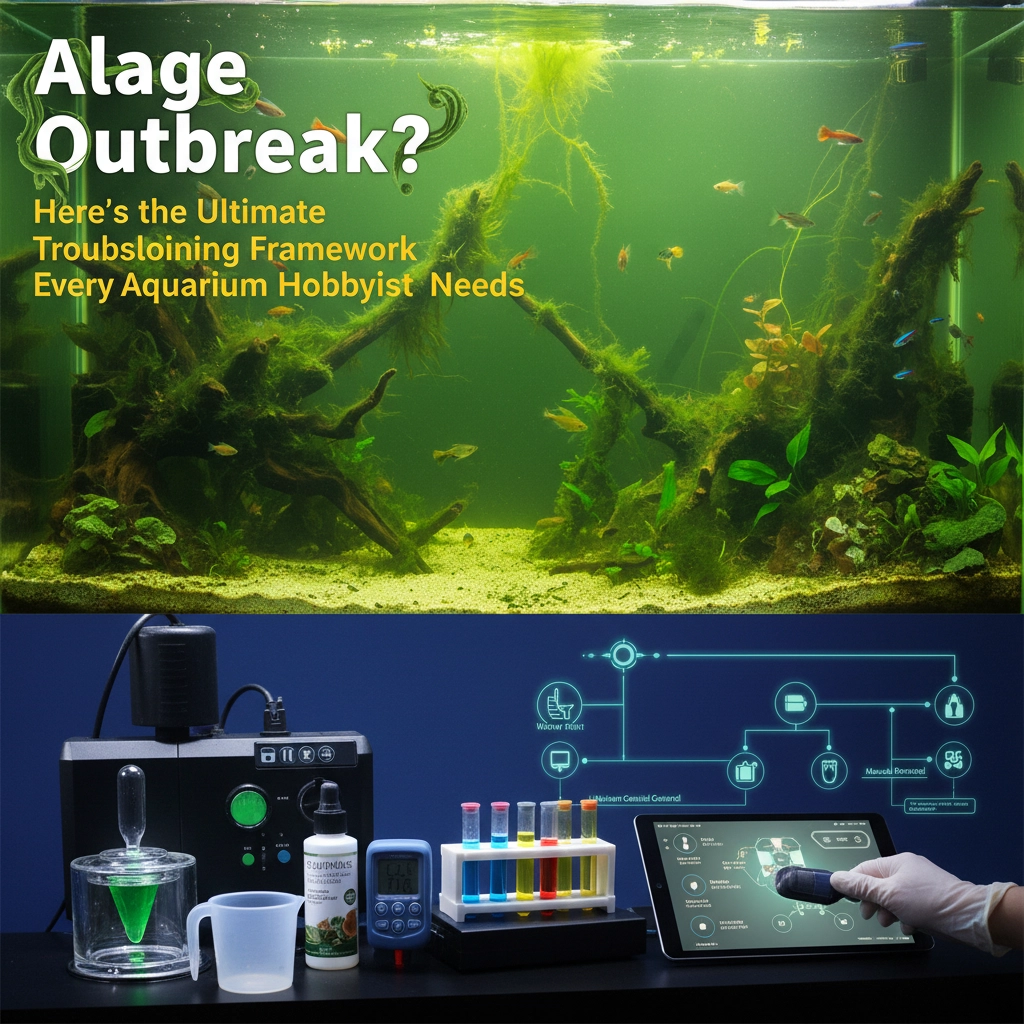
Whether you're a seasoned veteran or just dipping your toes into the mesmerizing world of aquarium keeping, there's one challenge that unites every aquarist: the dreaded algae outbreak. That moment when you wake up to find your once-pristine underwater masterpiece transformed into a green, slimy nightmare can feel overwhelming. But take a deep breath – you're not alone in this aquatic adventure, and more importantly, you have the power to turn the tide.
The key to conquering algae isn't just frantically scrubbing away what you can see. It's about diving into the depths of understanding what's causing your tank's ecosystem to tip out of balance. Think of algae as your aquarium's way of sending an SOS signal – it's telling you that something in your underwater world needs your attention.
Understanding the Root of Your Algae Adventure
Before you dive headfirst into battle mode, let's take a moment to understand what you're really dealing with. Algae isn't inherently evil – it's actually a natural part of any aquatic ecosystem. The problem arises when your tank's delicate balance shifts, giving algae the upper hand over your carefully curated aquatic paradise.
Your algae outbreak is likely caused by one (or more) of these common culprits:
- Overfeeding your finned friends – Those extra flakes become nutrients that fuel algae growth
- Inadequate filtration – Your current filter might be working overtime but still not keeping up
- Excessive lighting exposure – Too much light for too long creates an algae party
- Fluctuating water parameters – Unstable conditions stress your fish and encourage algae
- Poor water circulation – Dead zones in your tank become algae's favorite hangout spots
- Nutrient imbalances – Both excess and deficiency can trigger different algae types
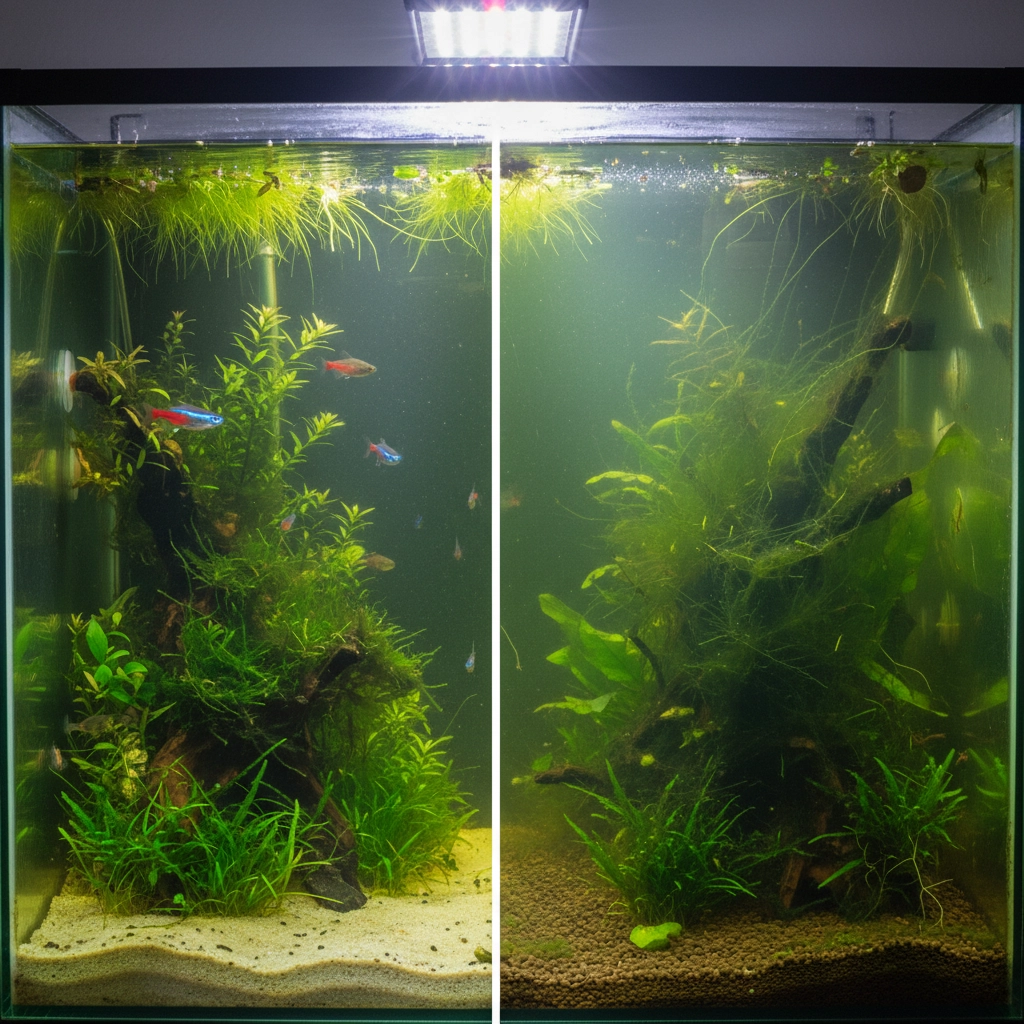
Your Step-by-Step Troubleshooting Framework
Now that you understand the battlefield, let's dive into your comprehensive action plan. This framework will guide you from immediate crisis management to long-term prevention, ensuring your aquatic oasis returns to its former glory.
Step 1: Assess and Diagnose Like a Pro
Your first mission is detective work. Grab your testing kit and take a close look at your tank's vital signs. Check your ammonia, nitrite, nitrate, and phosphate levels – these numbers will tell you a story about what's been happening beneath the surface.
Walk around your tank and identify the type of algae you're dealing with. Is it the stubborn blue-green slime that peels off in sheets? The fuzzy green coating on your glass? Or perhaps the dreaded hair algae that seems to grow overnight? Each type has its own personality and preferred treatment method.
Document your lighting schedule, feeding routine, and recent changes to your tank. Sometimes the smallest modifications can trigger the biggest algae explosions, and identifying these patterns will prevent future outbreaks.
Step 2: Launch Your Immediate Response Protocol
Manual Removal – Your First Line of Defense
Roll up your sleeves and get ready to get your hands wet! Start by physically removing as much visible algae as possible. Use algae scrapers for glass surfaces, soft brushes for decorations, and your trusty siphon to target substrate areas. This crucial first step gives your tank the best fighting chance before you address the underlying causes.
The Strategic Water Change
Perform a substantial water change of 25-30% using fresh, dechlorinated water. This isn't just about diluting nutrients – you're literally removing algae spores and organic waste that fuel future growth. During this water change, thoroughly vacuum your substrate, paying special attention to any areas where debris tends to accumulate.
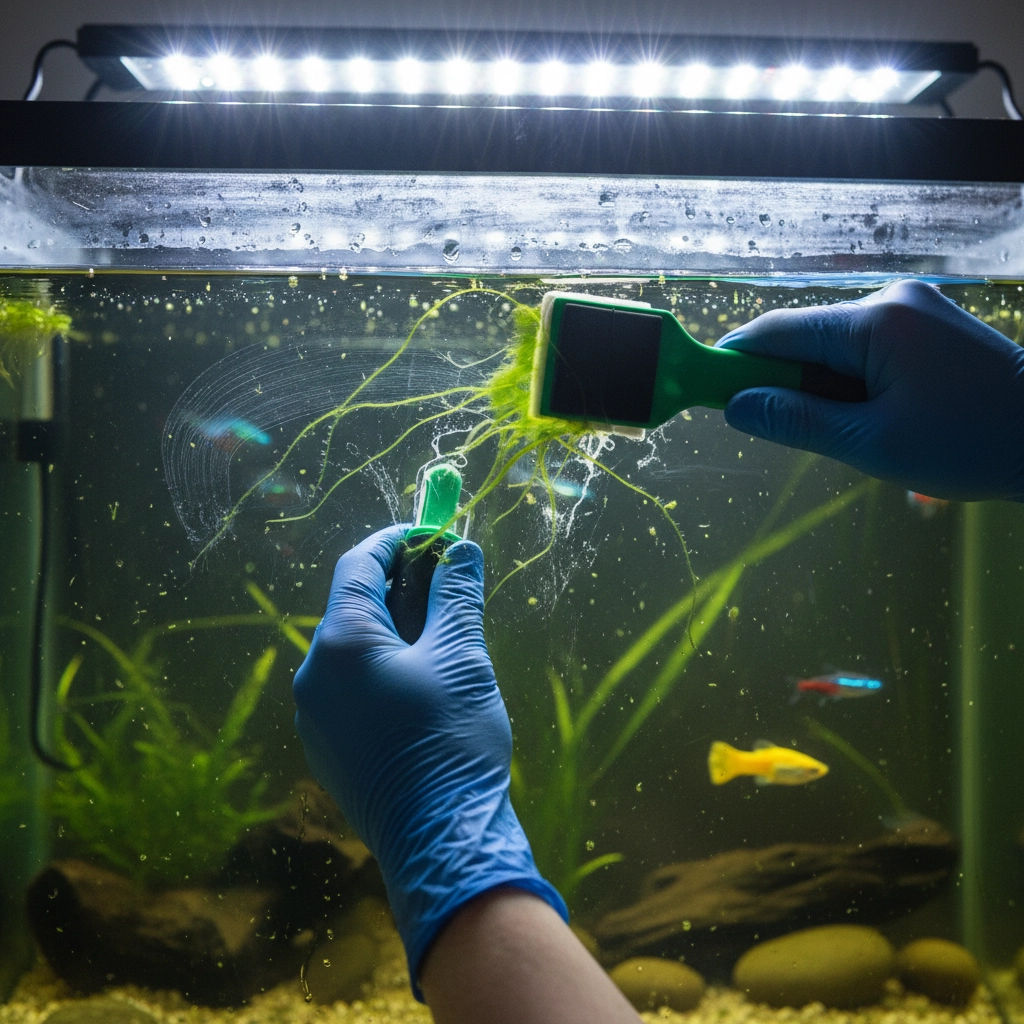
Step 3: Choose Your Treatment Strategy
Your treatment approach should match your outbreak's severity. Here's your arsenal from gentle to nuclear options:
The Blackout Method – Starve Them Out
For moderate algae issues, especially blue-green algae, the blackout method can work wonders. Completely cover your tank with towels or dark paper for 72 hours, creating total darkness. Don't worry about your fish – they'll be perfectly fine without food for this short period, and most aquatic plants can handle the temporary darkness better than the algae can.
During the blackout, resist the urge to peek! Even brief light exposure can restart the algae's growth cycle. Consider adding an extra airstone if you're concerned about oxygen levels, though this usually isn't necessary in well-established tanks.
Spot Treatment with Hydrogen Peroxide
For targeted algae problems, 3% hydrogen peroxide is your precision weapon. Turn off your filters to protect beneficial bacteria, then apply about 3ml per gallon directly to affected areas using a syringe. The solution will bubble and fizz – that's your sign it's working! Keep filters off for 20 minutes after treatment, then resume normal operation.
The Nuclear Option – Complete Reset
Reserve this approach only for severely compromised tanks where you're ready for a fresh start. Remove all inhabitants and plants, treat the entire tank with hydrogen peroxide or diluted bleach, then thoroughly rinse and restart your cycle. It's drastic, but sometimes necessary for the most stubborn infestations.
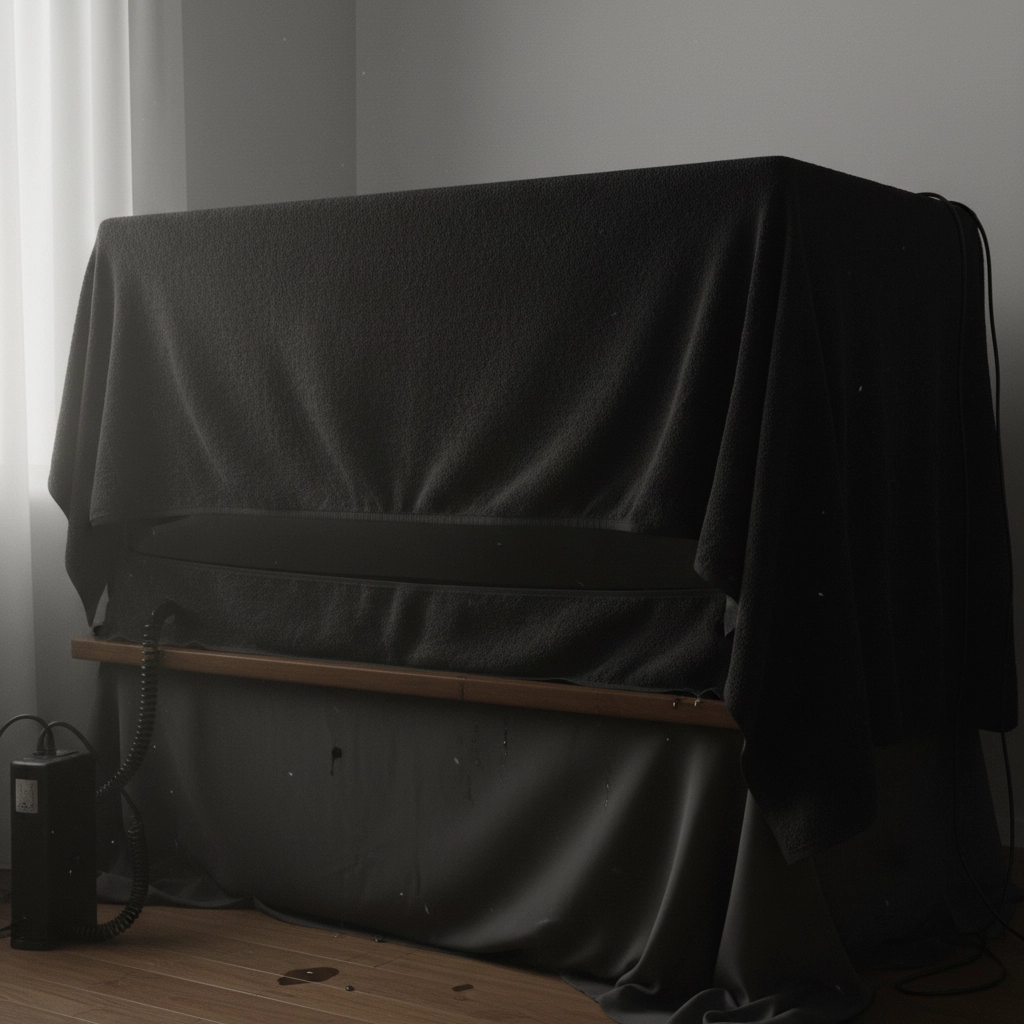
Building Your Long-Term Defense Strategy
Winning the battle against algae is just the beginning – now you need to win the war through consistent prevention strategies.
Optimize Your Lighting Game
Most algae outbreaks stem from lighting imbalances. Reduce your photoperiod to 8-10 hours daily and consider dimming your lights if possible. Your plants need adequate light to thrive, but more isn't always better when it comes to preventing algae blooms.
Master Nutrient Control
Think of nutrients like food for both your plants and algae – whoever can use them more efficiently wins the competition. Maintain regular water changes, avoid overfeeding, and consider adding fast-growing plants that can outcompete algae for available nutrients.
If you're dosing fertilizers, start with smaller amounts and adjust based on your plants' response. It's easier to add more nutrients than to remove excess ones from your system.
Enhance Water Flow and Filtration
Ensure your filter is appropriately sized for your tank volume and consider adding supplemental flow if you notice any dead zones. Good circulation prevents debris accumulation and ensures even nutrient distribution throughout your aquatic paradise.

Recruit Your Clean-Up Crew
Nature provides some excellent algae-fighting allies! Consider adding algae-eating shrimp, snails, or fish species that graze continuously on algae before it becomes problematic. These living solutions provide ongoing maintenance while adding interesting biodiversity to your tank.
Popular algae-eaters include:
- Amano shrimp for hair algae
- Nerite snails for glass and decoration cleaning
- Otocinclus catfish for diatoms and soft algae
- Siamese algae eaters for various algae types
Maintain Your Routine Excellence
Consistency is your secret weapon in the long-term algae prevention game. Establish and stick to regular maintenance schedules, monitor your water parameters weekly, and adjust your approach based on seasonal changes or tank maturity.
Remember that some algae presence is completely normal in healthy aquariums – the goal isn't complete eradication but rather maintaining balance where your desired plants and fish thrive while algae remains manageable.
Your Path Forward
Conquering an algae outbreak might feel like swimming upstream, but with this systematic approach, you're equipped to restore your aquatic oasis to its former glory. Remember, every experienced aquarist has faced this challenge – it's practically a rite of passage in our captivating hobby.
The most successful aquarists are those who view algae outbreaks not as failures, but as learning opportunities to better understand their tank's ecosystem. Each outbreak teaches you something new about your specific setup, bringing you one step closer to mastering the art of underwater gardening.
Your journey as an aquarium enthusiast is filled with these learning adventures, and overcoming algae challenges will make you a more confident, knowledgeable keeper. So grab your testing kit, roll up your sleeves, and dive into creating the thriving underwater world you've always envisioned. Your fish – and your future self – will thank you for taking decisive action today.
Keep the Conversation Flowing
Whether you're a seasoned veteran or a budding aquarist, we'd love to see your vibrant underwater worlds. Follow Aquarium Enthusiasts on social media for daily tips, dazzling inspiration, and community spotlights. Have questions? Send us a DM or drop a comment—we're here to help you steer your aquarium adventure with confidence.
Share your aquarium photos and tag our accounts so we can find them—we love featuring community tanks and celebrating your thriving aquatic oasis. You can find all our social links on our homepage:
Dive in, say hello, and let your passion ripple through the community!
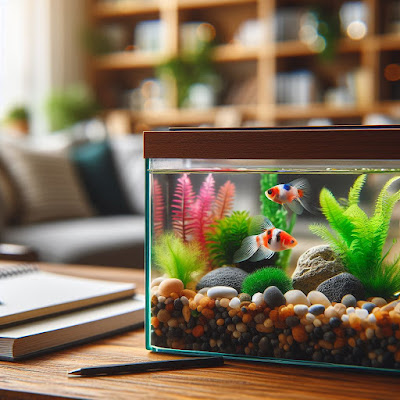






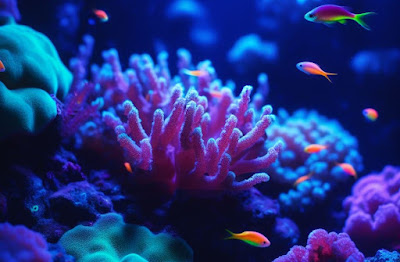
.png)
